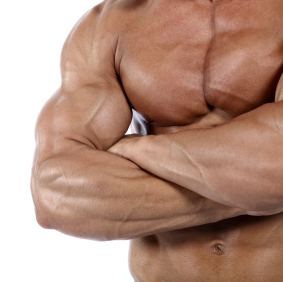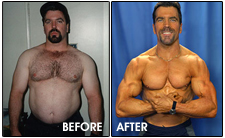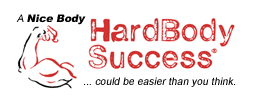|
Big Pecs - How to Build Chest Muscles
by Scott Abbett |
Aside from big arms, there's no desire among aspiring underweight muscle building enthusiasts that quite outdoes the longing for a big, well-developed chest. And why not; big pectorals command respect. They're somehow primitively associated with courage and assertiveness. When you have pectoral muscles that only slightly protrude beyond your abdominal section, you're considered to be "in shape". What's more, in a world of male competitiveness where one's height seems to unfairly monopolize the aura of dominating physical stature, powerful pectorals can be a great equalizer. They tell the world that regardless of the level your genetics had you lengthened, you're packaged physical prowess by choice. You exude strength and athleticism with well developed pectorals.
So what's the best method for developing a big chest? Well, that shouldn't be our only question. For if the pectorals aren't built in a balanced manner, excessive size can contribute to a feminizing effect on the male torso. Does anyone really want to develop "man boobs"? I didn't think so. Therefore, it's imperative that we make our pecs just a little bit top-heavy (upper pecs that protrude slightly more than the middle pecs) in our bid to increase chest size. An emphasis on making sure we are successful with incline exercises will ensure good upper pectoral development.
I then proceed to do two different exercises with this machine; one for my outer pecs and one for the inner. For outer pectorals, I move my arms from the fully outward position to about halfway through the range of a full flye. I do about five to eight sets like this. For inner pecs, I go from about the twenty degrees angle (where I ended my rep for the outer pec movement) to the point where the handles make contact with each other in front of me. I do those for another five to eight sets. When I'm done with these two partial rep exercises, my entire chest is worked and pumped to the max. |



 If you've been having trouble with pectoral growth, I highly recommend you switch to making flye exercises the foundation of your routine. In addition, split that first exercise of pec deck flyes into two half-rep movements. This will create maximum stress on both the inner and outer pecs - working wonders on both the size and shape of the muscles.
If you've been having trouble with pectoral growth, I highly recommend you switch to making flye exercises the foundation of your routine. In addition, split that first exercise of pec deck flyes into two half-rep movements. This will create maximum stress on both the inner and outer pecs - working wonders on both the size and shape of the muscles.
